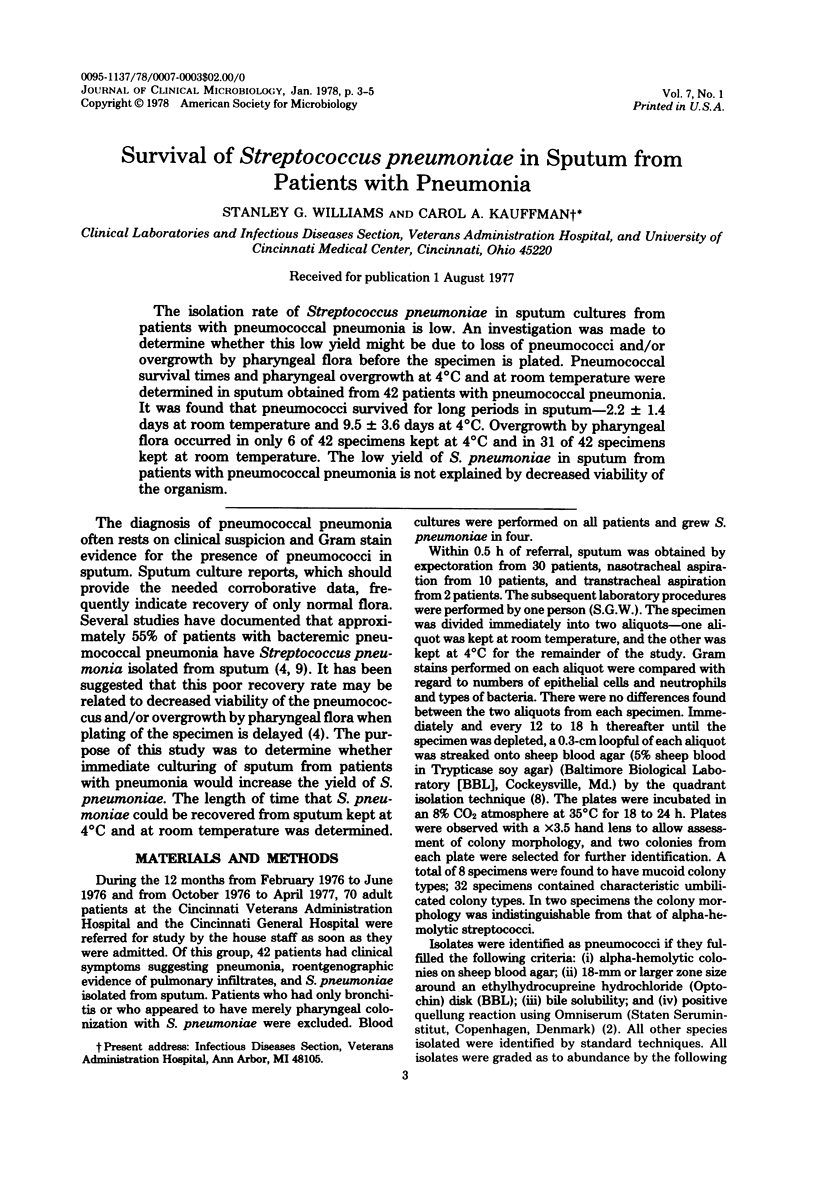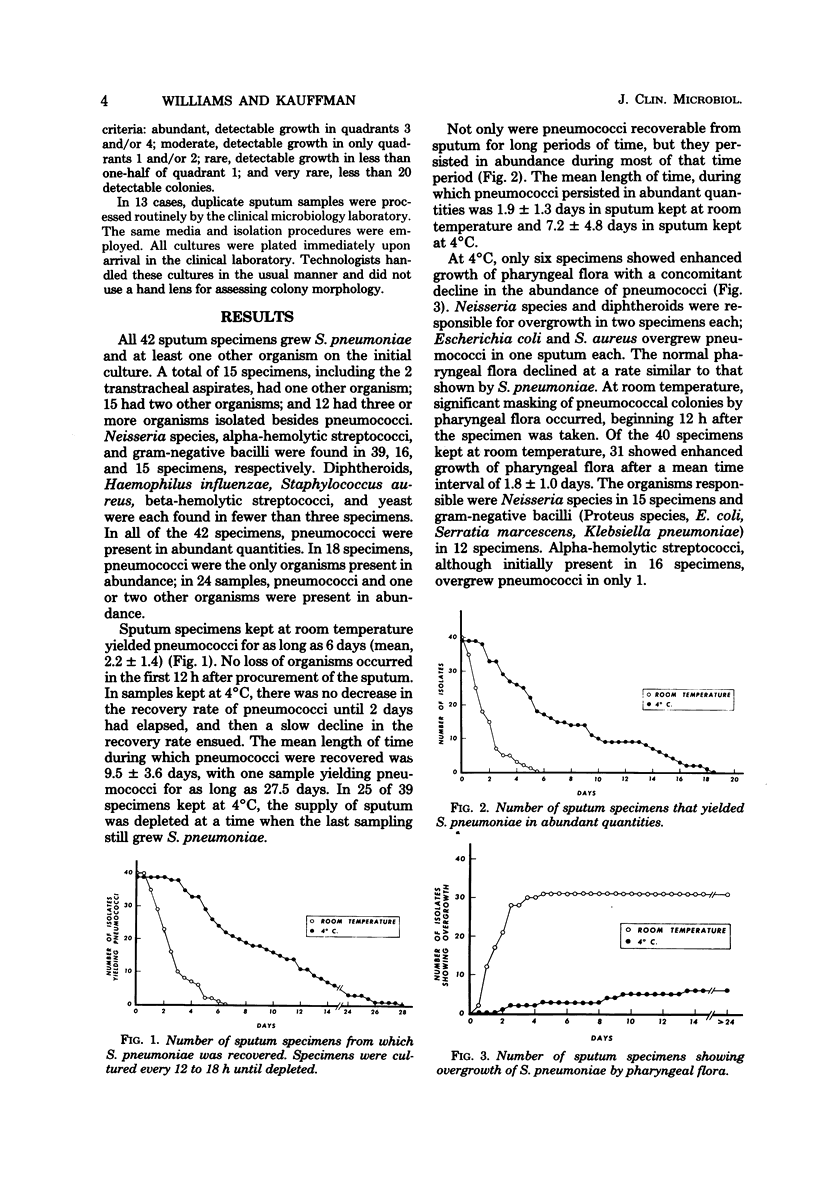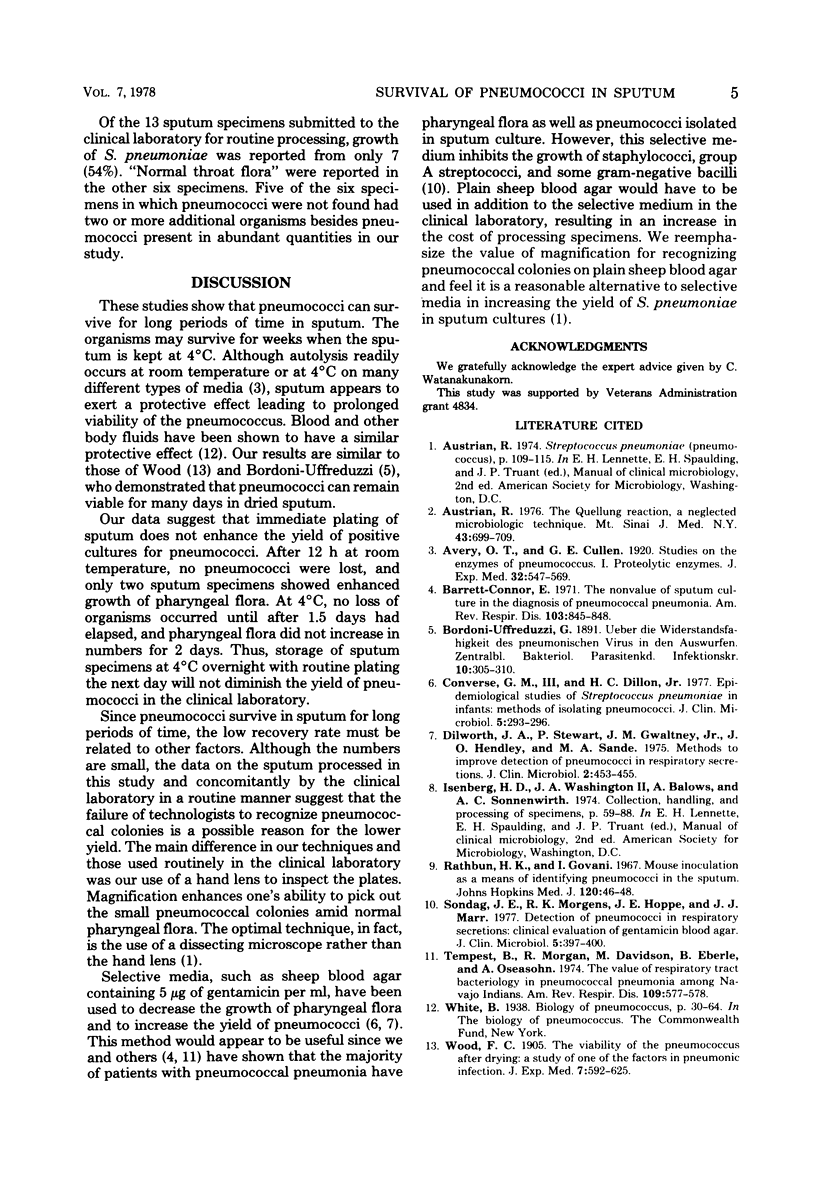Abstract
The isolation rate of Streptococcus pneumoniae in sputum cultures from patients with pneumococcal pneumonia is low. An investigation was made to determine whether this low yield might be due to loss of pneumocci and/or overgrowth by pharyngeal flora before the specimen is plated. Pneumococcal survival times and pharyngeal overgrowth at 4 degrees C and at room temperature were determined in sputum obtained from 42 patients with pneumococcal pneumonia. It was found that pneumococci survived for long periods in sputum--2.2 +/- 1.4 days at room temperature and 9.5 +/- 3.6 days at 4 degrees C. Overgrowth by pharyngeal flora occurred in only 6 of 42 specimens kept at 4 degrees C and 31 of 42 specimens kept at room temperature. The low yield of S. pneumoniae in sputum from patients with pneumococcal pneumonia is not explained by decreased viability of the organism.
Full text
PDF


Selected References
These references are in PubMed. This may not be the complete list of references from this article.
- Austrian R. The quellung reaction, a neglected microbiologic technique. Mt Sinai J Med. 1976 Nov-Dec;43(6):699–709. [PubMed] [Google Scholar]
- Barrett-Connor E. The nonvalue of sputum culture in the diagnosis of pneumococcal pneumonia. Am Rev Respir Dis. 1971 Jun;103(6):845–848. doi: 10.1164/arrd.1971.103.6.845. [DOI] [PubMed] [Google Scholar]
- Converse G. M., 3rd, Dillon H. C., Jr Epidemiological studies of Streptococcus pneumoniae in infants: methods of isolating pneumococci. J Clin Microbiol. 1977 Mar;5(3):293–296. doi: 10.1128/jcm.5.3.293-296.1977. [DOI] [PMC free article] [PubMed] [Google Scholar]
- Dilworth J. A., Stewart P., Gwaltney J. M., Jr, Hendley J. O., Sande M. A. Methods to improve detection of pneumococci in respiratory secretions. J Clin Microbiol. 1975 Nov;2(5):453–455. doi: 10.1128/jcm.2.5.453-455.1975. [DOI] [PMC free article] [PubMed] [Google Scholar]
- Rathbun H. K., Govani I. Mouse inoculation as a means of identifying pneumococci in the sputum. Johns Hopkins Med J. 1967 Jan;120(1):46–48. [PubMed] [Google Scholar]
- Sondag J. E., Morgens R. K., Hoppe J. E., Marr J. J. Detection of pneumococci in respiratory secretions: clinical evaluation of gentamicin blood agar. J Clin Microbiol. 1977 Apr;5(4):397–400. doi: 10.1128/jcm.5.4.397-400.1977. [DOI] [PMC free article] [PubMed] [Google Scholar]
- Tempest B., Morgan R., Davidson M., Eberle B., Oseasohn R. The value of respiratory tract bacteriology in pneumococcal pneumonia among Navajo Indians. Am Rev Respir Dis. 1974 May;109(5):577–578. doi: 10.1164/arrd.1974.109.5.577. [DOI] [PubMed] [Google Scholar]


